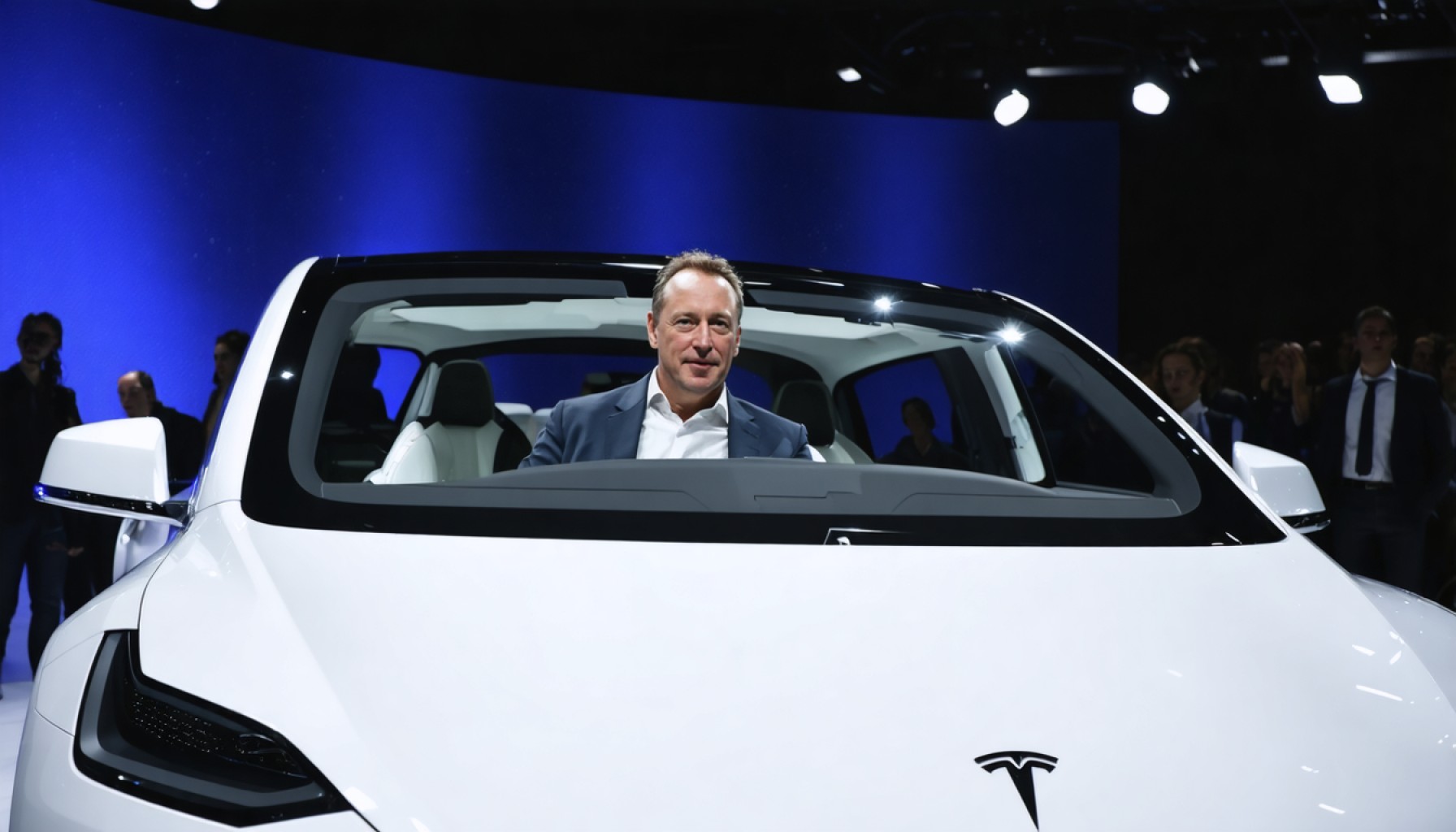- David Lau, Tesla’s vice president of software engineering for 12 years, has left the company, marking a significant leadership change.
- Lau was instrumental in integrating software and hardware, driving Tesla’s technological advancements and supporting the company’s strategic direction.
- Under Lau’s leadership since 2017, Tesla evolved its vehicles into sophisticated, updateable computers on wheels, blending tech innovation with automotive design.
- Lau’s departure raises questions about Tesla’s future directions and its ability to maintain its edge in software and electric vehicle technology.
- His exit highlights the crucial role of visionary software engineering in Tesla’s success and its potential impact on industry innovation trends.
- Tesla now seeks a successor to sustain and expand its legacy of innovative excellence in sustainable energy and automotive technology.
A seismic shift is rippling through the corridors of Tesla as David Lau, the stalwart vice president of software engineering, bids farewell after a momentous 12-year tenure. Entrusted with the digital pulse of Tesla vehicles, Lau’s departure marks the end of an era for the electric vehicle titan.
For years, Lau’s fingerprints have been etched into Tesla’s technological advancements. As the mastermind behind vehicle software, he orchestrated the harmonious fusion of code and hardware that powers Tesla’s cutting-edge electric offerings. From the sleek touchscreens that define their futuristic dashboards to the formidable cloud services steering Tesla’s autonomous capabilities, Lau’s influence is ubiquitous.
Since stepping into his vice president role in 2017, Lau has navigated Tesla through rapid technological revolutions. Under his vigilant eye, the company didn’t merely produce cars; it crafted sophisticated computers on wheels, wirelessly updated without a hitch. In a market where tech-savvy consumers demand ever-changing innovations, Lau’s agile leadership was crucial.
As he leaves behind the company whose mission to accelerate the world’s transition to sustainable energy often mirrors the rocket fuel pace of innovation, questions loom. Who will grasp the reins of Tesla’s software ship? Will the electric vehicle juggernaut maintain its tech supremacy amidst this leadership change?
One key takeaway from Lau’s journey is the power of visionary software engineering in defining an industry. Tesla’s success is underpinned not solely by its hardware but by its seamless software ecosystems that few can rival. The departure signals a potential shift in the technological landscape—one that rivals and enthusiasts alike will watch with keen anticipation.
Tesla now stands at a crossroads, a moment pregnant with possibilities as it seeks a successor who can not only uphold its storied legacy but also drive it toward uncharted territories of innovation. The world watches as new chapters of technological artistry and automotive excellence unfold at Tesla.
Who Will Lead Tesla’s Software Revolution After David Lau’s Departure?
The departure of David Lau, Tesla’s vice president of software engineering, marks a significant turning point for the electric vehicle giant. Lau has been a central figure in Tesla’s software innovations, which have redefined the automotive industry’s approach to integrating technology into vehicles. As Tesla embarks on a new era, several factors and questions arise concerning the future of its software development.
Key Questions and Insights
1. Who Will Replace David Lau?
Filling Lau’s position will be a critical task for Tesla. The successor must not only possess a deep understanding of software engineering but also have the vision to lead Tesla’s software into the future. The industry will be watching closely for an announcement, which could significantly impact Tesla’s stock and market perception.
2. How Will This Impact Tesla’s Innovation?
Lau’s departure might cause temporary disruptions or shifts in focus. However, Tesla is known for its robust engineering teams and culture of innovation. The company’s ability to sustain its tech-savvy momentum will depend on how quickly it adapts and aligns under new leadership.
3. Market Forecast and Industry Trends
– Increased Competition: As the electric vehicle market becomes more crowded, Tesla must continuously innovate to maintain its edge. Lau’s departure could provide an opportunity for competitors to catch up if Tesla experiences slower software innovation.
– Advancement in Autonomous Driving: Tesla’s pursuit of fully autonomous driving technologies represents a major frontier. The new leader will need to push forward in this highly competitive space, balancing safety, regulation, and technological advancement.
4. Security and Sustainability Concerns
– Data Security: As vehicles become more connected, the importance of cybersecurity grows. David Lau’s successor must prioritize protecting user data and the integrity of Tesla’s software systems.
– Sustainability Initiatives: Tesla’s mission to advance sustainable energy should align with its software strategies. Efficient software can contribute to better energy management and reduced emissions.
Actionable Recommendations
– Enhance Cybersecurity Measures: Prioritize developing robust cybersecurity protocols to protect against potential data breaches and vulnerabilities.
– Encourage Cross-Department Collaboration: Software development should not occur in isolation. Collaborating with other departments such as hardware engineering and data analytics can lead to comprehensive, innovative solutions.
– Focus on User-centric Updates: Continue Tesla’s trend of wirelessly updating vehicles to adapt to customer feedback and technological advancements, ensuring a superior user experience.
Contingency Strategies
– Interim Leadership: Appoint an interim leader with proven experience in software development to ensure a smooth transition and mitigate any operational hiccups.
– External Recruitment: Consider recruiting from outside Tesla’s current workforce to bring fresh perspectives and new ideas while aligning closely with the company’s vision.
Conclusion
The departure of David Lau is both a challenge and an opportunity for Tesla. While his legacy leaves big shoes to fill, it also paves the way for new innovations in software engineering at Tesla. As the company recruits a new leader, the focus should remain on pushing the boundaries of what’s possible in electric vehicle technology. For further updates and developments, make sure to visit the official Tesla website.
Tesla’s story underlines the critical role software plays in defining the future of automotive technology. As such, they must aggressively pursue advancements in this space to stay ahead in the rapidly evolving electric vehicle market.
